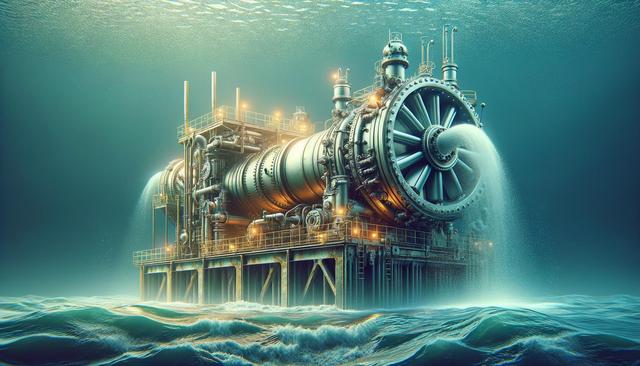Understanding the Function of Underwater Dredge Pumps
Underwater dredge pumps are engineered to displace a mixture of water and solid materials from beneath the surface, typically in aquatic environments like rivers, lakes, and reservoirs. These pumps play a key role in dredging operations, which are essential for maintaining navigable waterways, preparing construction sites, and preventing flooding. The pump uses high-powered suction to collect sediment and transport it through a discharge pipeline to a designated area. Depending on the dredging requirements, the type of sediment, and the operating environment, different models and configurations are chosen to maximize efficiency and minimize operational challenges.
One of the primary advantages of using an underwater dredge pump is its ability to handle a range of materials, including sand, silt, gravel, and even small rocks. The design typically includes wear-resistant components that allow it to function under harsh and abrasive conditions. These pumps are often used in:
- Riverbed deepening projects to maintain or increase depth for vessels
- Lake restoration to remove accumulated debris and improve water quality
- Construction site preparation, particularly in waterlogged or submerged zones
Understanding how these pumps work and the scenarios in which they thrive helps in selecting the right equipment for specific dredging operations.
Types of Underwater Dredge Pumps and Their Applications
There are several types of underwater dredge pumps, each suited to distinct operational needs. The most commonly used are submersible dredge pumps, cutter suction dredge pumps, and jet suction dredge pumps. Each type is designed to address specific sediment characteristics and environmental conditions. Submersible models, for instance, are ideal for remote or deep-water applications where portability and ease of installation are required. Cutter suction pumps, on the other hand, have a rotating cutter head that breaks up compacted materials before they are pumped out.
Here are some typical applications for each type:
- Submersible Dredge Pumps: Used for deep dredging, mining operations, and sludge removal
- Cutter Suction Dredge Pumps: Applied in port maintenance, land reclamation, and pipeline trenching
- Jet Suction Dredge Pumps: Suitable for cleaning silt and fine sand in shallow waters
Choosing the appropriate dredge pump depends on factors such as sediment type, dredging depth, and required discharge distance. Each project may require specific capabilities, so understanding the differences between pump types is essential for success.
Key Components and Engineering Considerations
The performance of an underwater dredge pump relies heavily on its core components and design. Essential parts include the impeller, casing, shaft, and seal systems. The impeller is the heart of the pump, generating the required force to move the slurry. It’s often made from specially hardened materials to withstand abrasion. The casing directs the flow efficiently, while the shaft connects the motor to the impeller. Seal systems ensure that water does not infiltrate the motor housing, which could lead to malfunction or damage.
Important engineering considerations during pump selection and operation include:
- Wear resistance: High-durability materials extend pump life in abrasive environments
- Flow rate and head: These determine how much slurry can be moved and how far
- Motor capacity: A powerful motor ensures stable operation under load
- Pump mounting: Correct installation helps in reducing vibration and improving efficiency
Investing in quality components and ensuring proper design alignment with project requirements can significantly improve performance and reduce downtime during dredging operations.
Maintenance Practices for Long-Term Efficiency
Like any heavy-duty equipment, underwater dredge pumps require regular maintenance to ensure reliability and performance. Maintenance routines involve both preventive checks and reactive repairs. A well-structured maintenance schedule not only extends the life of the pump but also improves safety and reduces unexpected operational interruptions. Regular inspections help in identifying wear and tear in impellers, seals, and bearings before they cause severe issues.
Effective maintenance practices include:
- Routine inspection of impeller blades for signs of erosion
- Checking and replacing worn-out seals to prevent water ingress
- Monitoring vibration levels to detect unbalanced or misaligned components
- Lubrication of bearings and other moving parts
- Cleaning of suction inlets and discharge pipelines to avoid blockages
Consistent maintenance not only enhances operational efficiency but also contributes to the environmental compliance of dredging activities by minimizing accidental leakage or equipment failure.
Environmental and Regulatory Considerations
Operating underwater dredge pumps involves more than just technical setup—it also requires adherence to environmental and regulatory guidelines. Dredging can disturb aquatic ecosystems, so it is crucial to plan operations to minimize ecological impact. Local and national environmental authorities often have regulations in place governing sediment disposal, noise levels, and water turbidity. Compliance with these regulations helps avoid legal issues and contributes to sustainable project execution.
Key environmental practices include:
- Conducting environmental impact assessments before starting operations
- Using silt curtains or barriers to contain disturbed sediments
- Monitoring water quality before and after dredging
- Disposing of dredged materials in approved locations
By integrating environmental planning into dredging projects, operators can ensure responsible use of underwater dredge pumps while maintaining harmony with local ecosystems and communities.
Conclusion
Underwater dredge pumps offer a practical solution for sediment removal in a variety of water-based environments. Whether maintaining navigability in waterways or preparing submerged construction sites, these pumps provide versatility and performance when selected and operated correctly. Understanding the types, components, maintenance needs, and environmental responsibilities associated with dredge pumps allows project managers and operators to make informed decisions. With proper planning and execution, underwater dredge pump operations can be efficient, safe, and environmentally sound.




Leave a Reply